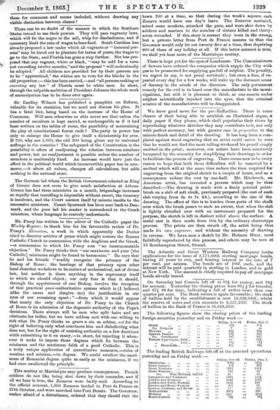We have good news for the pre-Raffaelites. There is some
chance of their being able to establish an illustrated organ, a daily paper if they please, which shall popularize their views by reproducing whatever sketches they may contribute to it, not only with perfect accuracy, but with greater ease in proportion to the minute finish and detail of the drawing. It has long been a com- plaint against wood engraving that an artist could never be sure that he would not find the most telling strokes of his pencil simply omitted in the print ; moreover, our artists have been constantly hampered by the necessity for simplifying their drawings in order to facilitate the process of engraving. There seems now to be every reason to hope that both these difficulties will be removed by a method which will at the same time reduce the time required for engraving from the original sketch to a couple of hours, and as a consequence reduce the cost by one-half. Mr. Hitchcock, an American artist, has invented a process which may be thus described:—The drawing is made with a finely pointed paint- brush on a slab of soft chalk, previously prepared (the cost of such slab varying from 2s. to 7s. 6d.), according to the size of the drawing. The effect of this is to harden those parts of the chalk over which the brush passes to such an extent, that when the slab is lightly chiselled over with an instrument prepared for the purpose, the sketch is left in distinct relief above the surface. A metal cast is then made from this by the ordinary electrotype process. The prints are then struck off, the artist being thus made his own engraver, and without the necessity of drawing in reverse. We have seen a sketch by Mr. Holman Hunt, most faithfully reproduced by this process, and others may be seen at 16 Southampton Street, Strand.


































 Previous page
Previous page